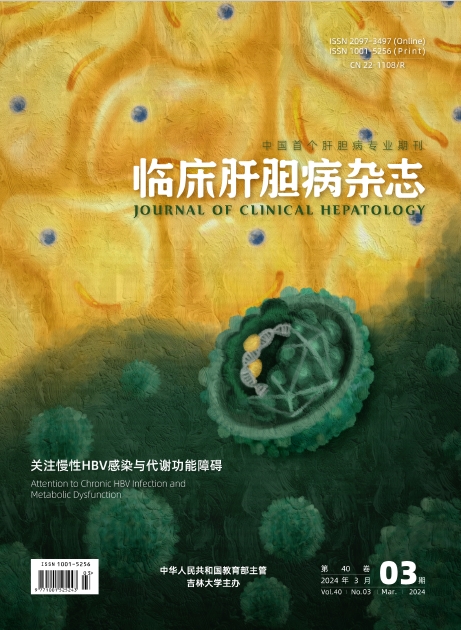| [1] |
TAO L, YANG G, SUN T, et al. Capsaicin receptor TRPV1 maintains quiescence of hepatic stellate cells in the liver via recruitment of SARM1[J]. J Hepatol, 2023, 78( 4): 805- 819. DOI: 10.1016/j.jhep.2022.12.031. |
| [2] |
LIU XL, YANG GY, ZHANG W, et al. Therapeutic effect of Taohong Siwu decoction on a mouse model of carbon tetrachloride-induced liver fibrosis and its mechanism[J]. J Clin Hepatol, 2021, 37( 11): 2563- 2568. DOI: 10.3969/j.issn.1001-5256.2021.11.016. |
| [3] |
FRIEDMAN SL, PINZANI M. Hepatic fibrosis 2022: Unmet needs and a blueprint for the future[J]. Hepatology, 2022, 75( 2): 473- 488. DOI: 10.1002/hep.32285. |
| [4] |
HU L, ZHANG P, SUN W, et al. PDPN is a prognostic biomarker and correlated with immune infiltrating in gastric cancer[J]. Medicine(Baltimore), 2020, 99( 19): e19957. DOI: 10.1097/MD.0000000000019957. |
| [5] |
GRACIA-SANCHO J, CAPARRÓS E, FERNÁNDEZ-IGLESIAS A, et al. Role of liver sinusoidal endothelial cells in liver diseases[J]. Nat Rev Gastroenterol Hepatol, 2021, 18( 6): 411- 431. DOI: 10.1038/s41575-020-00411-3. |
| [6] |
ZHAO XY, KONG YY, ZHAO XY, et al. Risk factor analysis of significant liver fibrosis in the non-obese non-alcoholic fatty liver disease patients[J]. J Clin Exp Med, 2022, 21( 14): 1497- 1500. DOI: 10.3969/j.issn.1671-4695.2022.14.011. |
| [7] |
YANG GY, TAO L, ZHANG W, et al. Mechanism of action of Eupolyphaga steleophaga in improving nonalcoholic steatohepatitis by regulating syndecan 3[J]. J Clin Hepatol, 2022, 38( 7): 1513- 1520. DOI: 10.3969/j.issn.1001-5256.2022.07.012. |
| [8] |
ROEHLEN N, CROUCHET E, BAUMERT TF. Liver fibrosis: mechanistic concepts and therapeutic perspectives[J]. Cells, 2020, 9( 4): 875. DOI: 10.3390/cells9040875. |
| [9] |
DELEVE LD. Liver sinusoidal endothelial cells in hepatic fibrosis[J]. Hepatology, 2015, 61( 5): 1740- 1746. DOI: 10.1002/hep.27376. |
| [10] |
XIE G, WANG X, WANG L, et al. Role of differentiation of liver sinusoidal endothelial cells in progression and regression of hepatic fibrosis in rats[J]. Gastroenterology, 2012, 142( 4): 918- 927. e 6. DOI: 10.1053/j.gastro.2011.12.017. |
| [11] |
KRISHNAN H, OCHOA-ALVAREZ JA, SHEN Y, et al. Serines in the intracellular tail of podoplanin(PDPN) regulate cell motility[J]. J Biol Chem, 2013, 288( 17): 12215- 12221. DOI: 10.1053/j.gastro.2011.12.017. |
| [12] |
WANG X, WANG X, LI J, et al. PDPN contributes to constructing immunosuppressive microenvironment in IDH wildtype glioma[J]. Cancer Gene Ther, 2023, 30( 2): 345- 357. DOI: 10.1038/s41417-022-00550-6. |
| [13] |
MARUYAMA S, KONO H, FURUYA S, et al. Platelet C-type lectin-like receptor 2 reduces cholestatic liver injury in mice[J]. Am J Pathol, 2020, 190( 9): 1833- 1842. DOI: 10.1016/j.ajpath.2020.05.009. |








 DownLoad:
DownLoad:

